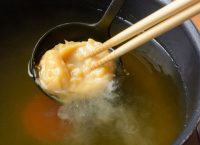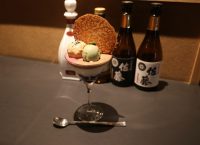Excitement of the crystal clear look and sweetness spreading in your mouth! The secret story of the Yobuko’s local specialty “Squid’s ikizukuri”

Karatsu-shi, Saga POSTED on 2019.08.01
Karatsu-shi, Saga POSTED on 2019.08.01
Visiting the home of squid’s ikizukuri*
How crystal clear! If you were one of those people who were thinking that squid sashimi is white, this squid’s appearance and taste may be a shock.
At the very north end of Saga Prefecture in Kyushu Region, there is a port town called Yobuko at the peninsula off of Genkainada. This town has been popular for the fishing industry, especially for the squids. Every year, nine hundred thousand tourists come to the “squid town” to taste the fresh crystal squid’s ikizukuri.
*sashimi prepared from living seafood
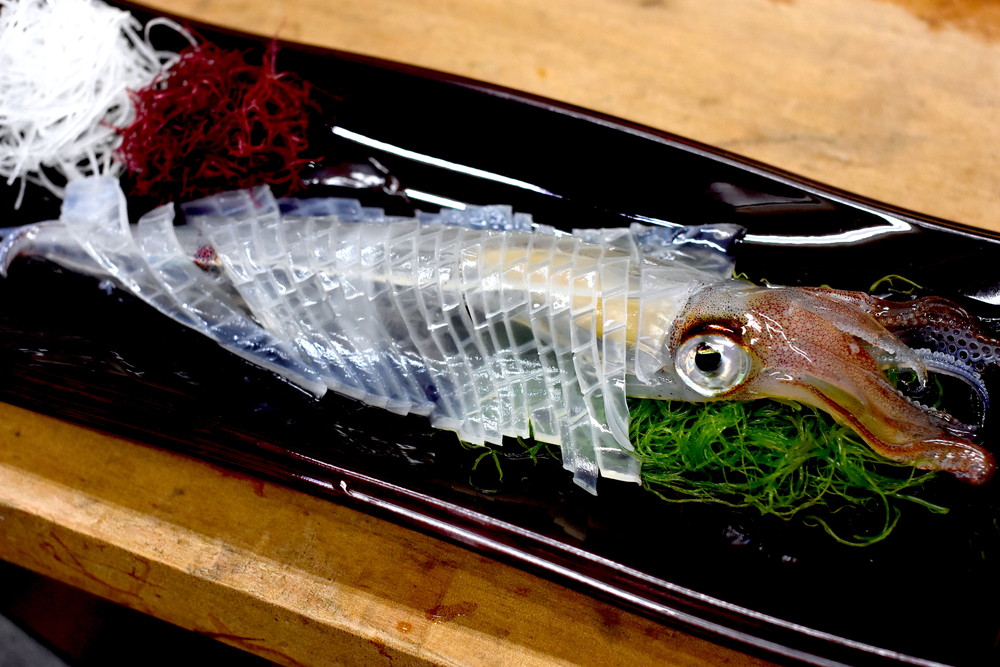
How was the Yobuko’s local specialty, squid’s ikizukuri born?
As we visited Fish Dining Genkai, the pioneer of the squid’s ikizukuri which opened in 1969, the second generation manager Kazuhiro Koga hosted us with a generous smile. He operates both the service of delivering fish and the restaurant business at Genkai Katsugyo.
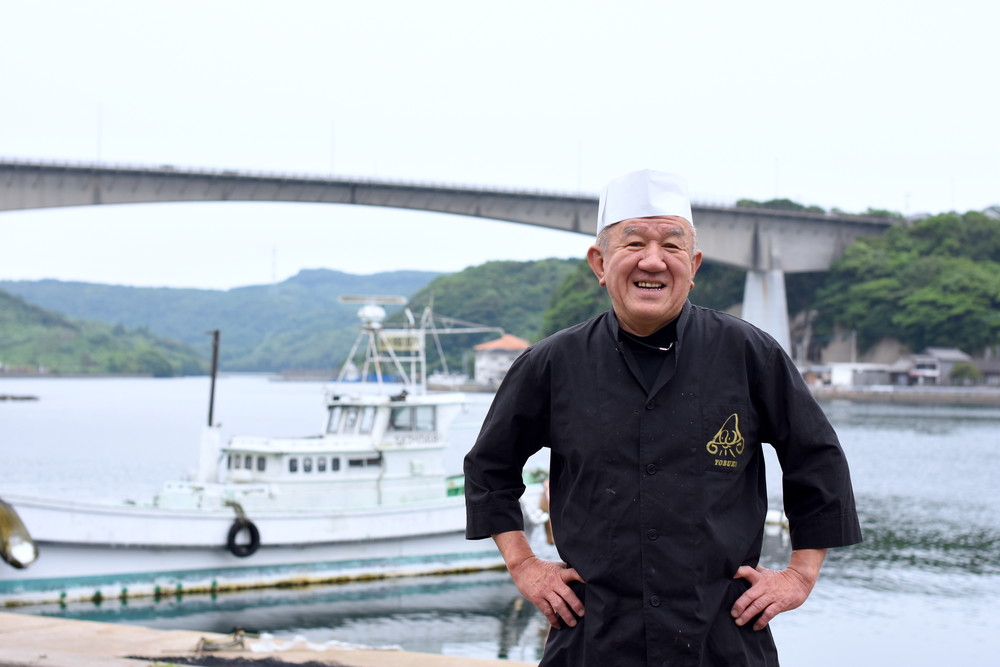
Kazuhiro was born and raised in Yobuko and after going on to an university in Fukuoka, he decided to go to Tokyo to fulfill his dream of becoming a musician with two years of time limit he set for himself. Then he came back to his homeland when he was 23 and started working at his father’s company.
Nobody noticed the squid was “special”
Kazuhiro says,“Yobuko used to be popular for skipjack herring** of breams and flatfishes, and the expensive fishes used to be served as ikizukuri.”No one thought squids could become a local specialty.
“Genkainada is one of the leading fishing grounds in Japan and there, they can catch yari ika (sword end squid). But here in Yobuko, squid is just a fishing bate. Since there are so many, we didn’t think it could be priced. And also, they mess the boat with their squid ink.”
** a way of fishing using a single hook and a line
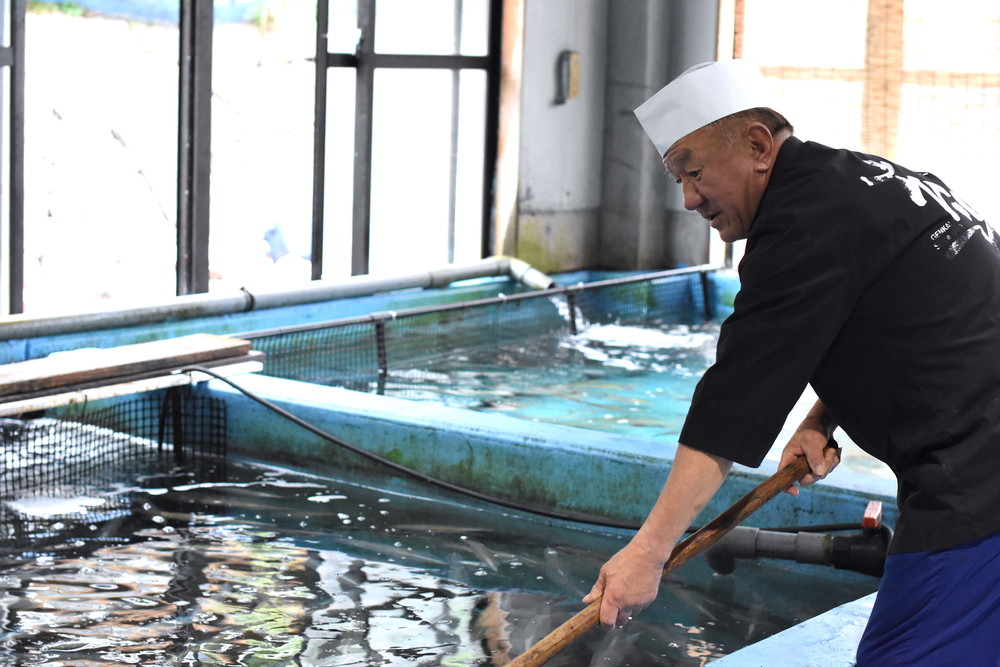
Kazuhiro thought “How about eating the squids alive?” But squids are sensitive and weak to temperature change, so they cannot be taken to the market alive. Instead, he told the other fishermen that he would buy the squids from them at a high price so they would catch them for him. Moreover, he came up with a way to keep the squids alive through trial and error. He made a huge fish tank in his restaurant with circulating sea water, and puts the squid in the tank directly from the boat. Cooperating with the local fishermen, delivering fresh squid and fish became a possible business.
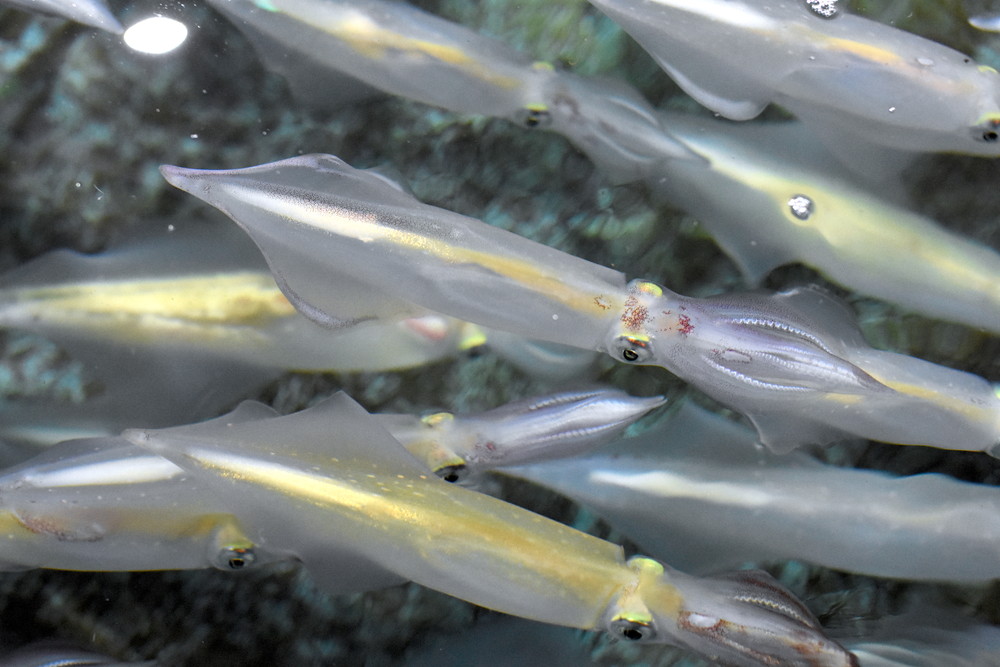
Liven up the Yobuko
As soon as they started serving squid’s ikizukuri at the Genkai, not only customers came to eat, but restaurant managers were also interested in the business. Kazuhiro taught them how to make the ikizukuri without stint. After being taught from Kazuhiro, Kawataro started to serve squid’s ikizukuri set meal at the price of 800 Japanese yen.
That was the beginning of changing the image of “expensive live fish.” Squid’s ikizukuri became common and the number of restaurants increased little by little. Moreover, new menus such as squid shu mai were born, and squid became a local specialty of Yobuko.
“I wasn’t thinking of gaining profit only at my restaurant, but I wanted to liven up the whole town of Yobuko. So when squids are having a poor catch, we share information between restaurants and if I didn’t have any stocks to share, I introduce other restaurants.” Kazuhiro talked with a friendly smile with love to his homeland peeking.
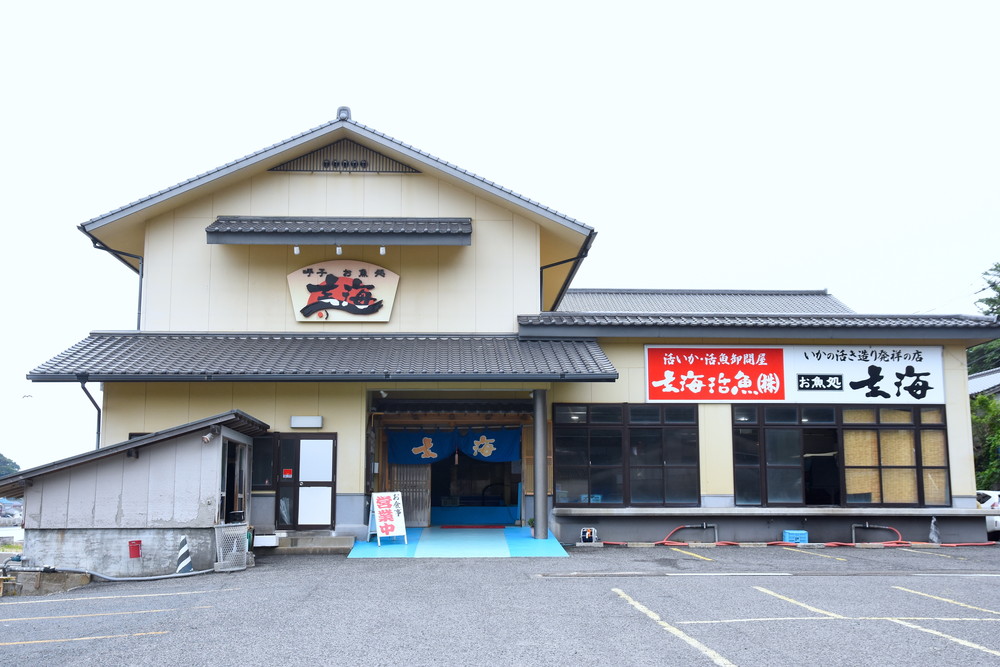
Serving 3 variety of squids depending on season
Inside the curtains of the Fish Dining Genkai, there are 15 fish tanks both large and small, like an aquarium. Squids, shrimps, horse mackerels, mackerels, sea breams, sea urchins, abalones make the customers excited.
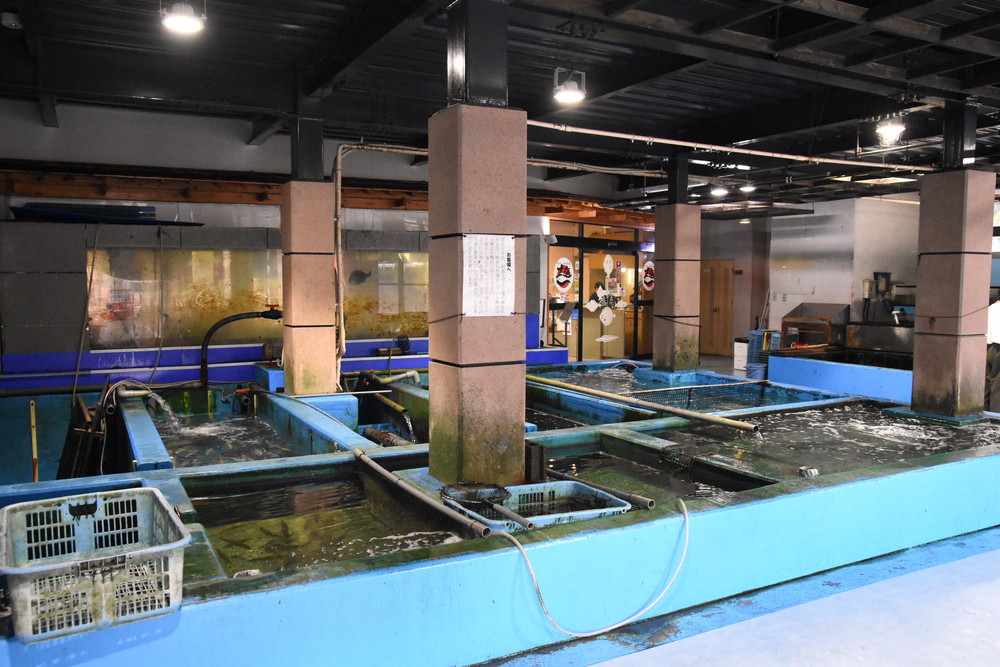
There are 3 varieties of squids that can be eaten at the Genkai depending on season. Sword end squid, which is called yari ika(spear squid) at Yobuko can be caught at the Genkainada from late March to late December. Yari ika live for only a year. Aori ika(oral squid) can be caught from late November to mid-April, and kou ika(cuttlefish) can be caught from late January to the end of March. So squids can be eaten all year in Yobuko. The day of this interview, yari ikas were swimming in the fish tanks.
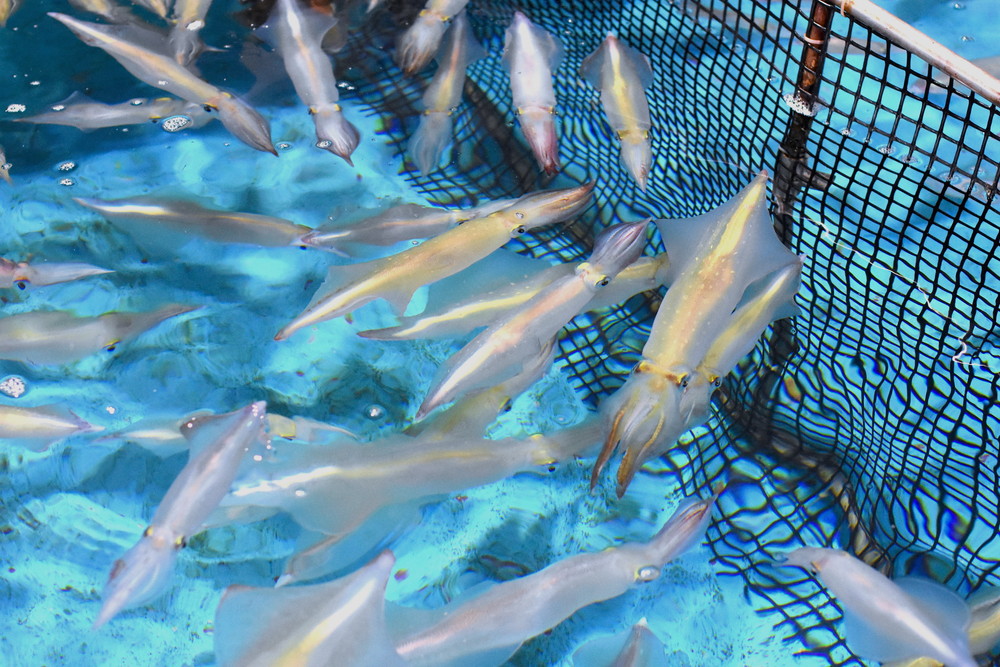
Ikizukuri served in a minute! Tempura is excellent too
After ordering squid’s ikizukuri, they take the squid out of the squid tank in the kitchen and prepare the menu directly.
“Squid’s texture and umami taste may differ by body temperature and fresh water. So we wear gloves and dress the squids quickly by not touching it as much as we can.” Literally, he prepared the dish in less than a minute. The glossy crystal clear squid’s tentacles were still moving on the dish and the beauty was just like art.
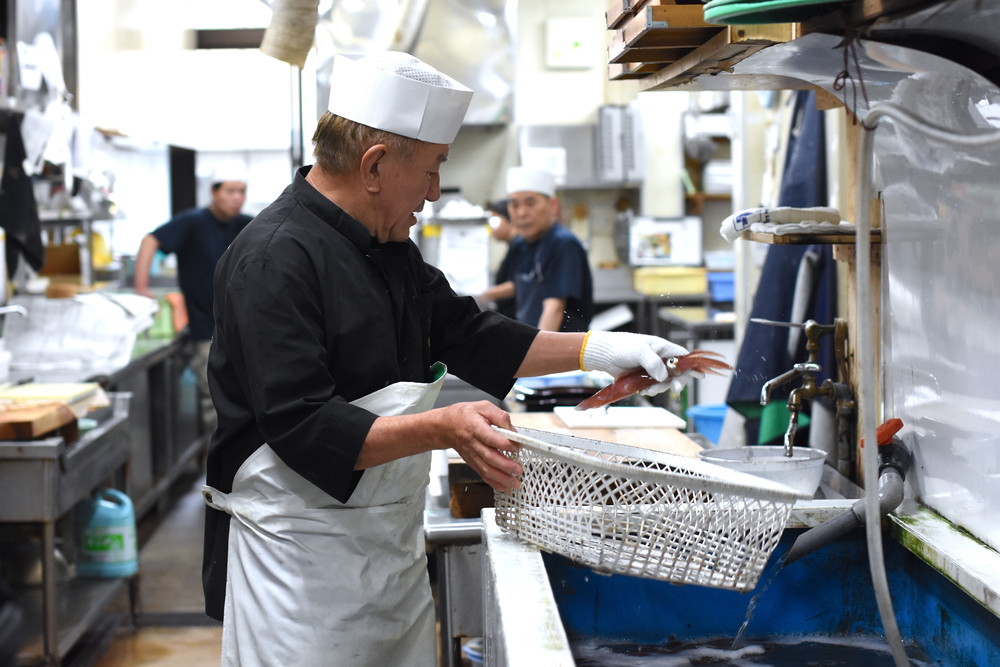
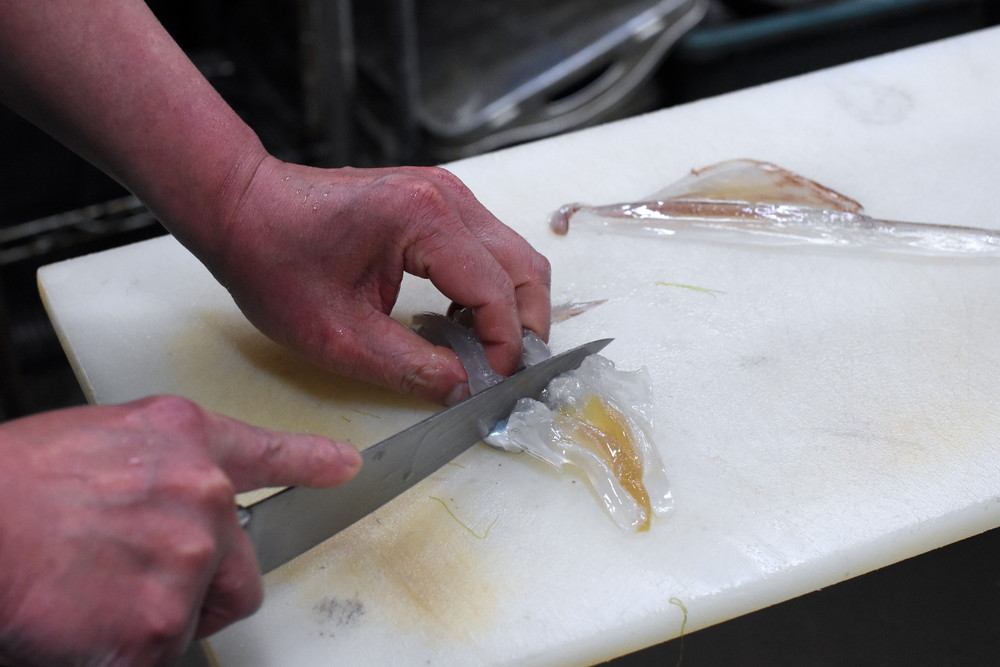
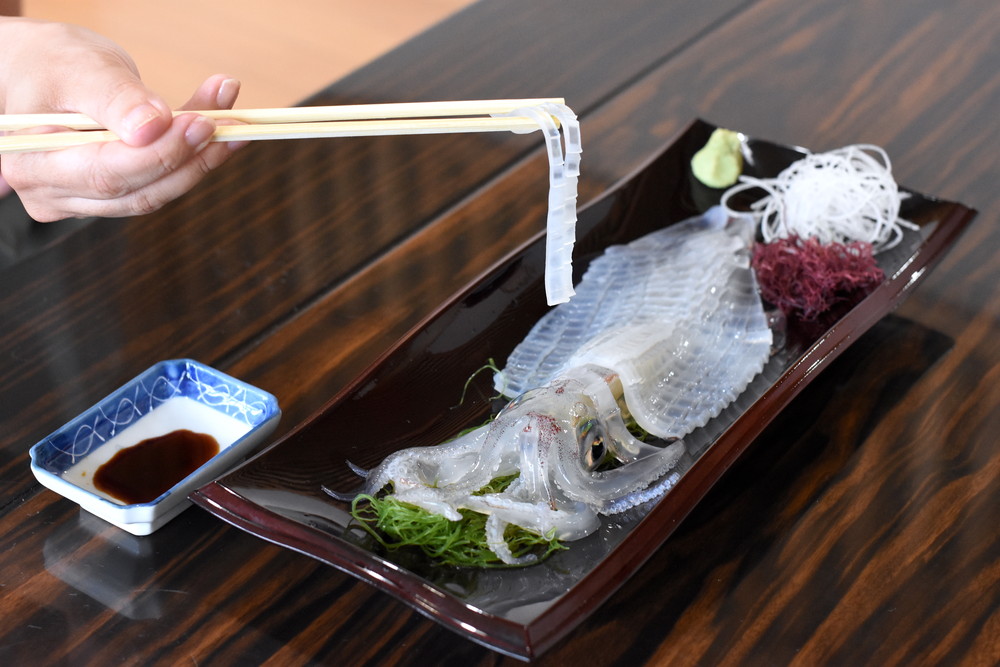
The thick squid’s typical tough texture increases the sweetness bite after bite. How delightful. It is worth traveling far for this dish. “Many foreign tourists come and eat the ikizukuri these days.” People from all around the world relish the same food.
After eating the sashimi, the leftovers can be cooked into tempura, shio yaki(salt fried), or nitsuke(shoyu boiled). The most popular tempura is made by putting batter on the leftovers and fried quickly. Eaten with tem tsuyu (tempura soup) or salt, the crispy tempura is soft and tender inside and the fresh squid’s sweetness and umami explodes inside one’s mouth. This changes the image of squid tempura. Now we know why many people come for not only the sashimi but also for the tempura.
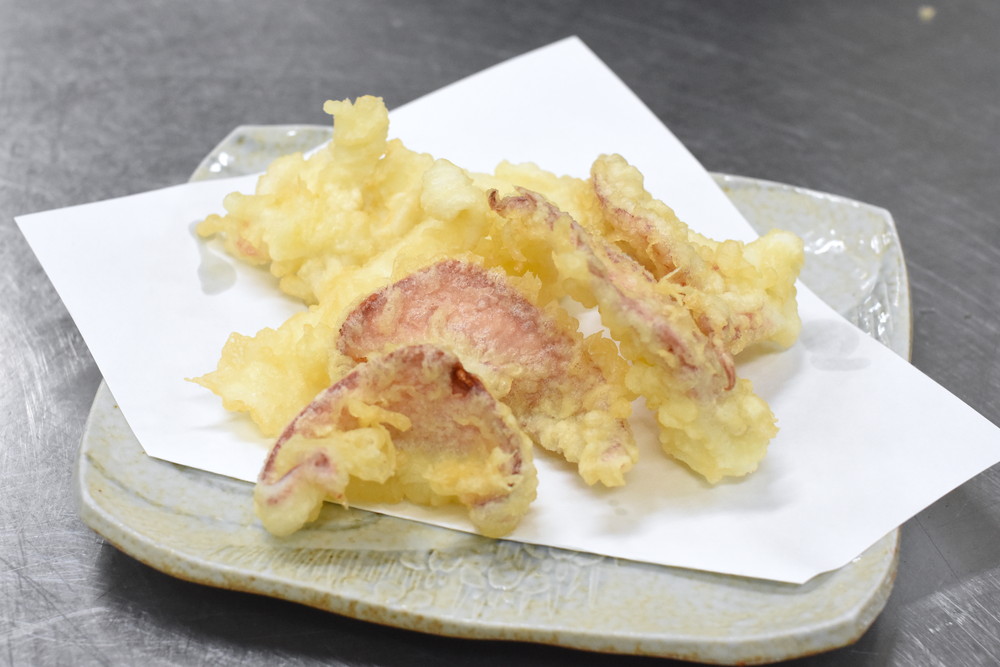
As mentioned before, squids are sensitive and weak to adapting to different environments. Therefore they were difficult to transport long hours, so squid’s ikizukuri could only be eaten in Yobuko and Fukuoka. These days, we can try them in the Tokyo metropolitan areas due to the progress of the transportation technology, but the relishing experience at Yobuko was exceptional.
Store name: Fish Dining Genkai
Address: 508-3 Tononoura Yobuko-cho, Karatsu-shi, Saga
Telephone Number: 0955-82-3913(Japanese only)
Business hours: AM11:00-PM8:00, Except for Tuesdays, December 30th, January 2nd, 3rd opened AM11:00-PM4:00
Holidays: December 31st, January 1st
Website: www.yobuko-genkai.co.jp/ (Japanese only)
- Writer
- Emi Sasaki
- Photographer
- Tsukasa Kubota
ソトレシピLOCAL GUIDE
-
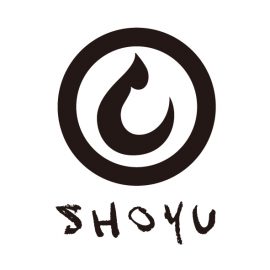 For more
For moreSHOYU Editorial department(SHOYU Editorial department)
information
Related articles
-

[NEWS] Collaboration of Japanese Kawaii Culture and Japanese Cuisine
Harajuku and Omotesando area in Tokyo are the sacred
- from:
- Minami Aoyama, Minato-ku, Tokyo
- genre:
- Experience / Eat
POSTED on 2019.11.06



